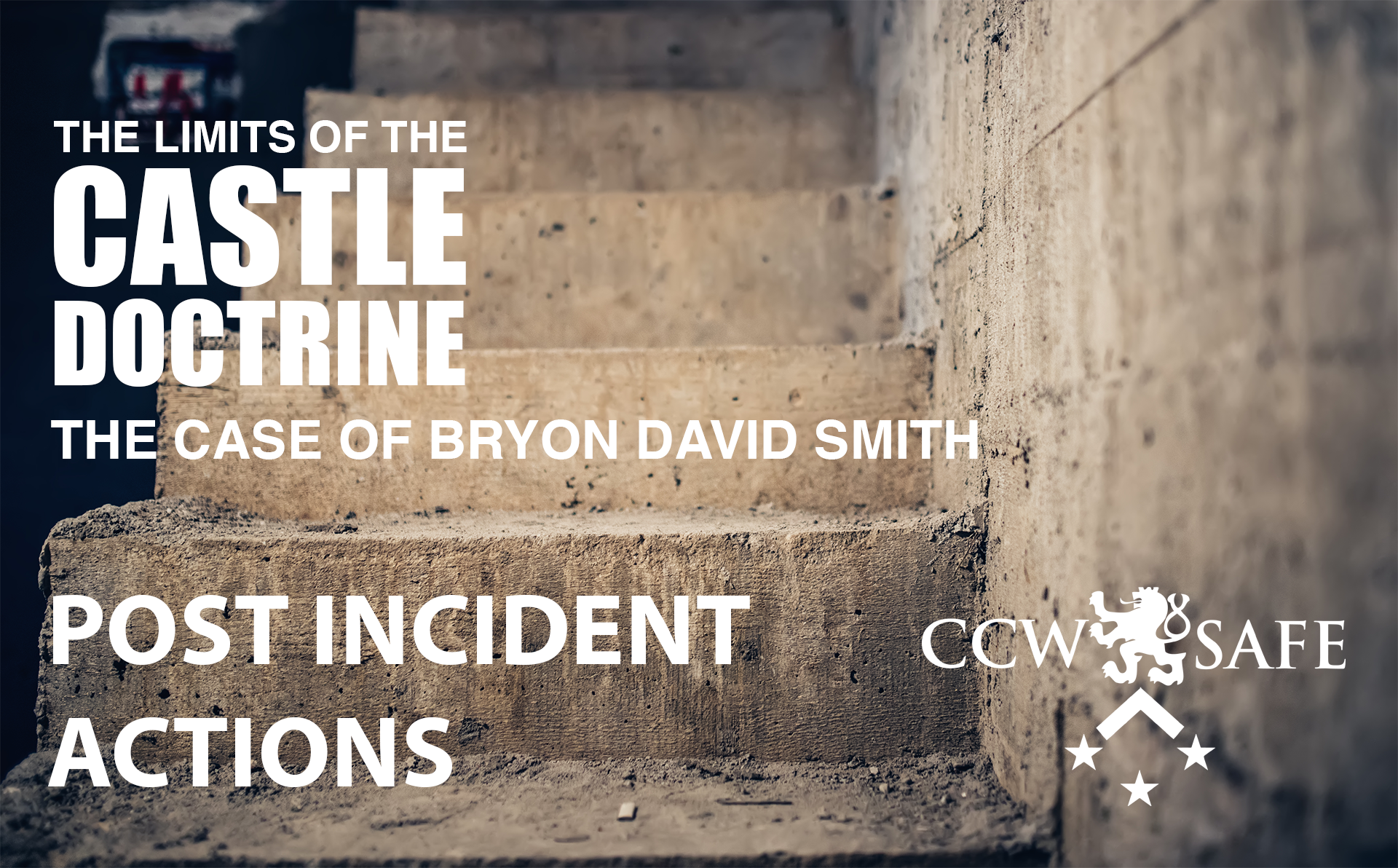
Posted on March 15, 2018
The Limits of the Castle Doctrine- The Byron David Smith Case- Post Incident Actions
The Limits of the Castle Doctrine
The Limits of the Castle Doctrine
Lessons from the Byron David Smith Case
Part 5: How Post-Incident Actions Affected the Legal Defense of Byron David Smith
In our series The Four Elements of Self-Defense, we’re exploring how location, escalation, reasonable fear, and post-incident accidents can affect the legal defense in the wake of a self-defense shooting. In our last installment, we explored how reasonable fear affected Smith’s legal defense.
Byron David Smith claimed he was burglarized so many times in his Little Falls, Minnesota home that he no longer felt safe and had resorted to wearing a holstered pistol around the house. On Thanksgiving Day 2012, his security cameras revealed two teens casing his house and peeking in windows. Smith retreated to his basement where he waited for the intruders. Seventeen-year-old Nick Brady came down the basement steps first, and Smith shot him three times, killing him. Brady’s cousin, eighteen-year-old Haile Kifer followed ten minutes later, and Smith shot and killed her as well.
As we have noted in previous installments of this series, Smith has already made a number of mistakes that would haunt him at trial, but what he’d did and didn’t do in the hours following the shooting sealed the deal on his guilty verdict.
One of Smith’s biggest mistakes is that he failed to report the shooting to authorities. When sheriff’s deputies finally arrived at his home the next day, Smith told investigators he didn’t want to bother law enforcement on Thanksgiving. Instead, he wrapped the two bodies in tarps, dragged them to a corner in his basement, and he waited until the next day to contact anyone.
In a call to his neighbor, Bill Anderson, Smith said that he had “solved the break-ins in the neighborhood”. He then solicited Anderson’s help in finding an attorney.
Concerned, Anderson called law enforcement, and soon sheriff’s deputies arrived at Smith’s house. According to testimony, Smith first showed deputies where Brady had broken into the house, then he led the shocked investigators to the basement where the now decomposing bodies lay wrapped in tarps.
Next, without the counsel of a lawyer, Smith gave several recorded statements to investigators. He said things like “I was doing my civic duty. I had to do it.” He admitted he fired more shots than necessary, and that he “was no longer willing to live in fear.”
Beyond the content of his statements, Smith showed little remorse about the killings, which contributed to prosecutor’s belief that Smith fired in anger rather than fear.
There are a number of lessons here for gun owners concerned about home defense:
First, it is imperative to report a shooting as soon as it is safe to do so. The longer you wait, the more likely doubt will be cast on your motives. Also, you should never tamper with the evidence. If you acted reasonably in self-defense, the forensics will likely support your claim. If you do something like move the bodies, as Smith did, you will have compromised what could have been exculpatory evidence — and you’ll also appear to be manipulating evidence, which will cast doubt on the believability of your testimony.
Speaking of testimony, you should never give detailed statements to law enforcement without the advice of a lawyer. When law enforcement officers are involved in shootings, they wait 48-72 hours before giving a statement because it’s been proven that after a traumatic experience, the mind doesn’t function the same, and testimony is likely to be confused. Let law enforcement know that you are willing to cooperate, but insist that you wait before giving statements — and don’t submit to questioning without the advice of a lawyer.
In our next instalment we’ll examine the verdict in the Smith trial, and summarize lessons learned for the gun owner concerned with home defense.

Shawn Vincent- Litigation Consultant
Shawn Vincent is a litigation consultant who helps select juries in self-defense cases, and he manages public interest of high-profile legal matters. If you have any questions for Shawn, or would like more articles like this, let us know below!